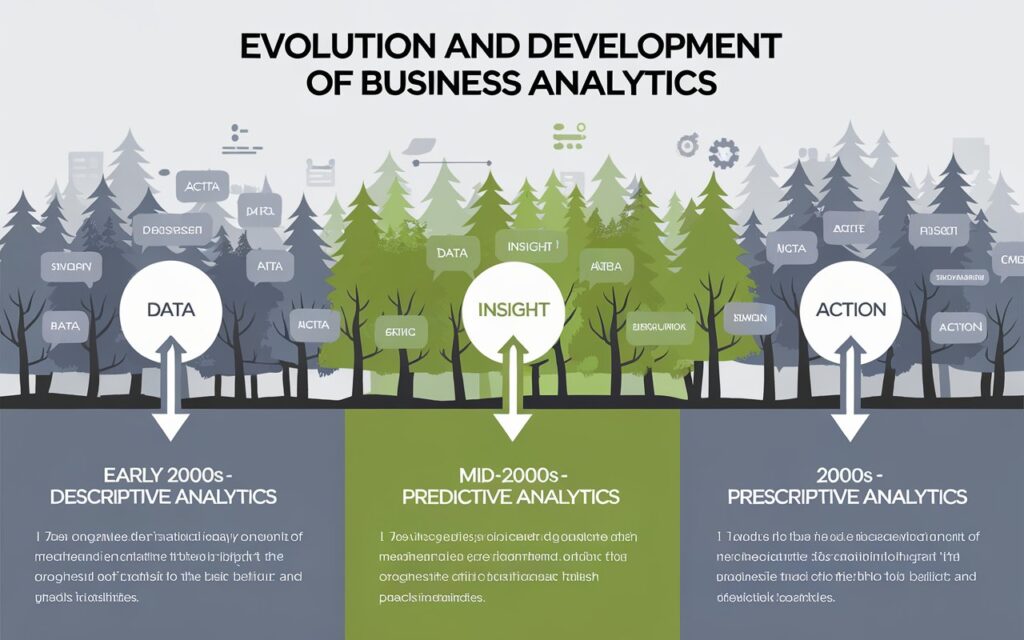Introduction
In 2024, analytics has become a crucial driver for businesses aiming to achieve sustained growth. By leveraging data-driven decision-making, companies can gain deep insights into customer behavior analysis, optimize operations, and identify new market opportunities. From HR analytics that reduce employee turnover to production optimization enhancing efficiency, analytics tools transform raw information into actionable strategies. Businesses can improve finance forecasting, refine marketing campaigns, and streamline supply chains by adopting intelligent analytics practices. Embracing these technologies allows firms to respond quickly to market changes, stay ahead of competitors, and implement effective business growth strategies that deliver measurable results in a rapidly evolving commercial landscape.
What is Business Analytics?

Business analytics is the practice of examining data collection to extract meaningful insights that inform critical business decisions. It goes beyond reporting numbers by analyzing customer segmentation, patterns, and trends to enhance business operations. Companies that adopt analytics tools can make decisions backed by evidence rather than intuition, improving decision intelligence and long-term planning.
In modern business, business analytics empowers teams to improve operational efficiency, optimize resources, and monitor KPIs (key performance indicators). From HR analytics tracking employee engagement to finance forecasting and production optimization, every department can leverage insights to drive measurable results. In essence, business analytics transforms raw data collection into strategic intelligence that fuels growth.
Evolution and Development of Business Analytics

The journey of business analytics started with simple data aggregation and reporting, but today it has evolved into an essential driver of growth. Advanced predictive modeling and AI-based models allow organizations to anticipate market trends and improve supply chain optimization. Early analytics tools focused on descriptive statistics, whereas today real-time data processing and text analysis deliver actionable insights in seconds.
As technology advanced, companies integrated data pipelines to ensure seamless data integration across departments. Workforce analytics now helps HR teams improve retention with employee churn analytics, while marketing insights are refined through dynamic content delivery. The evolution of business analytics has made it possible to combine multiple data sources for holistic business performance improvements.
Core Components and Tools of Business Analytics

The core of business analytics relies on analytics tools like dashboards, BI software, and AI-powered analytics platforms. These technologies enable process streamlining, demand forecasting, and production optimization across operations. Companies like Uneecops provide tailored analytics solutions, helping businesses convert real-time data into actionable strategies.
Modern business analytics platforms also incorporate predictive analytics and decision intelligence for advanced modeling. Tools for inventory management, finance forecasting, and customer segmentation allow companies to track KPIs and optimize business operations. With these components, firms can make strategic choices that enhance growth and improve overall efficiency.
How Business Analytics Helps Companies Grow

Business analytics drives business growth strategies by providing actionable insights into customer behavior analysis and operational performance. Companies can identify inefficiencies, forecast demand, and improve production analytics while reducing costs. Through AI-powered analytics, decisions are faster, more accurate, and more aligned with strategic objectives.
Businesses also use analytics tools for targeted campaigns and personalized marketing, which increases engagement and drives revenue. Understanding market trends allows firms to adapt quickly, while supply chain optimization ensures smooth operations. Ultimately, business analytics enables companies to scale sustainably and maintain a competitive edge in 2024.
Applications and Use Cases in 2024
In 2024, business analytics impacts multiple industries. In finance, finance forecasting and fraud detection improve risk management. In marketing, personalized marketing and competitor analysis enhance campaigns. Production optimization and inventory management in manufacturing reduce waste and improve efficiency.
Retailers use predictive analytics for demand planning and dynamic content delivery. Healthcare companies leverage data-driven decision-making to optimize patient care, while logistics firms utilize real-time data for route and supply chain efficiency. Across sectors, analytics tools transform raw data collection into strategic business performance enhancements.
| Industry | Analytics Use Case | Impact on Growth |
|---|---|---|
| Finance | Fraud Detection, Forecasting | Reduced risk, improved decision-making |
| Marketing | Personalized Marketing | Increased engagement, higher ROI |
| Manufacturing | Production Optimization | Lower costs, higher efficiency |
| Retail | Demand Forecasting | Better inventory management, increased sales |
| Healthcare | Patient Care Optimization | Reduced costs, improved outcomes |
Trends in Business and Big Data Analytics
The 2024 analytics landscape is shaped by AI-powered analytics, predictive modeling, and real-time data integration. Companies increasingly rely on dynamic content delivery and targeted campaigns to engage customers. Workforce analytics and employee churn analytics help HR teams reduce turnover and optimize talent management.
Emerging trends include data integration across cloud platforms, text analysis for sentiment insights, and decision intelligence for faster, evidence-based strategies. Firms embracing analytics tools for market trends analysis and production optimization gain significant advantages, making business analytics an essential pillar for business growth strategies.
Challenges and Best Practices
Adopting business analytics comes with challenges such as data quality, integration complexity, and skill shortages. Organizations must establish strong data pipelines, implement rigorous analytics tools, and ensure proper process streamlining for effective outcomes.
Best practices include phased implementation, training for employees in analytics tools, and leveraging AI-based models for predictive analytics. Regular audits of KPIs and continuous monitoring of business operations ensure that insights translate into actionable growth strategies. Proper planning in strategic planning and demand forecasting mitigates risks and maximizes returns.
Getting Started: Services and Consultation
To implement business analytics, companies can request demos, consultations, and e-books from service providers like Uneecops. Starting with a pilot project allows evaluation of analytics tools, optimization of data integration, and improvement of business performance before scaling.
Steps for successful adoption include defining objectives, training teams on AI-powered analytics, and integrating real-time data into decision-making. By monitoring KPIs, tracking market trends, and applying predictive modeling, firms can drive sustainable growth in 2024.
About the Author & Related Resources
The author is an expert in business analytics and decision intelligence, sharing insights on analytics tools, data collection, and business growth strategies. Readers can explore recent articles, subscribe to newsletters, and follow social channels to stay updated on predictive analytics, finance forecasting, and market trends.
Additional resources provide case studies and guidance on HR analytics, production optimization, and customer behavior analysis, offering practical strategies to implement business analytics across departments effectively.